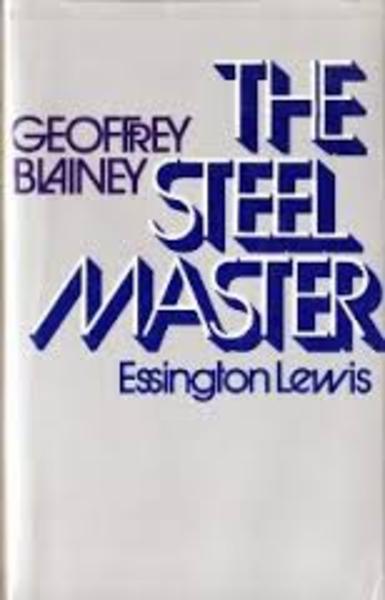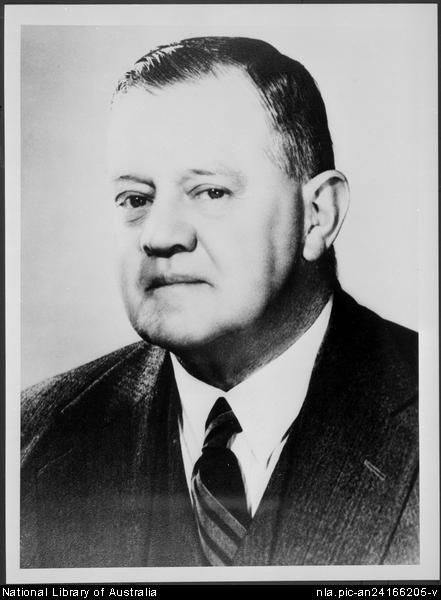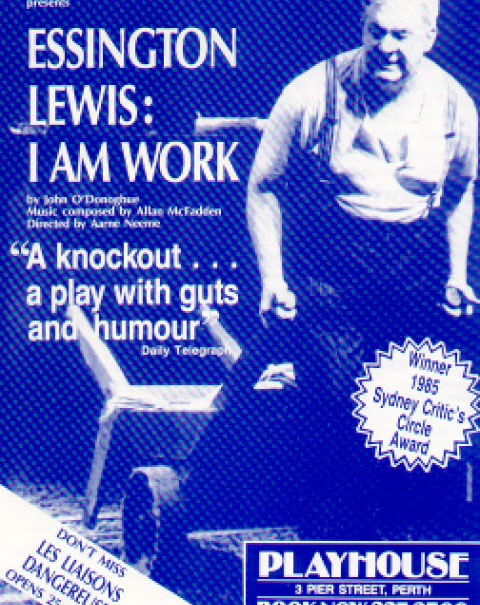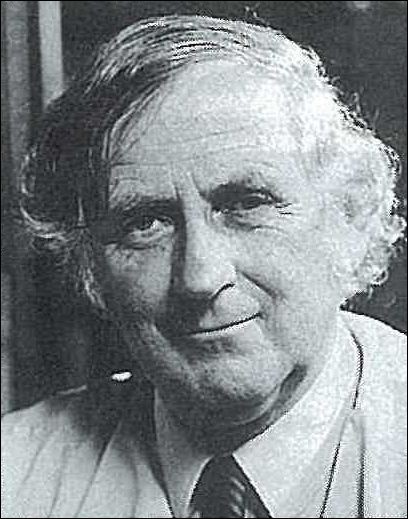Who was the Steel Master? That is today’s topic, Bleaders. Any one know? No one know?
Essington Lewis, he was the Steel Master. Huh? Never heard of him?
That is the typical response I get from the dog walkers in the park, my research sample of opportunity, as they say in the learned journals of social science. In those pages it usually means captive students in a class. My captives are tethered to pooches, mutts, and hounds.
Every Australian should know Essington Lewis (1881-1961). For extra credit Bleaders, consult Professor Google or Dr Wikipedia on the subject, and report back. Better still, consult the Australian Dictionary of Biography.

Lewis twice refused a knighthood from prime ministers Robert Menzies, Liberal, and John Curtin, Labor, because of the attendant publicity. His phasing was colourful and not suited to a family blog like this.
In time he became a member of the Order of the Companion of Honour, an award so rare few royalist have heard of it and start reaching for thistles and garters to fathom it. It is well above both undergarments and weeds.
At the time Lewis accepted it there were only five other Australian incumbents,and his adhesion was made possible by the direct intervention of King of England. C.H., as it is styled among monarchist, is a club open only to long serving prime ministers. That single criterion excluded Lewis. It is an award so discreet, it escapes, like so much else, the notice of the ever vigilant press.
He was BHP for a generation.
 Essington Lewis
Essington Lewis
There was a time, and not so long ago, when every Australian knew that BHP was the Big Australian. BHP stands for Broken Hill Proprietary which began in silver and lead mining and converted itself, in good part thanks to a young Essington Lewis, from the declining silver mines of South Australia to steel manufacturings in Newcastle on the Hunter River, near all that coal for firing the smelter.
Lewis was born and bred in South Australia, educated in the Adelaide Mining School, apprenticed to a BHP property when it was one of hundreds of small mines in the northern reaches of South Australia where the sand blows from the Northern Territory and the far west of New South Wales.
His father, a stock trader, declined not once, not twice, but three times to invest in the nascent BHP enterprise, who bred in his son a vigorous outdoor life, and an outlook on life that prized the outward, the physical, the material, control, and order. Kind of a Teddy Roosevelt without the books and reading glasses. Nor does religion seem to have figured in his life.
Essington was also a demon for detail, and no demon could hide from him in the details. He copied out passages from textbooks and carried them with long into his career, as ready references. He had his clothes altered to accommodate the notebooks he carried to record, it seems, nearly everything he saw and did. He usually had at least two notebooks on his person and he cross-referenced them one to another every night. Each was filled with his minute but legible hand writing, as he recorded, measured, weighed, calculated, hefted, and walked the properties on which he worked. In later life, he also recorded the names and work of everyone he meant on his many tours.
Here is one example from this early days. At the mine the teamsters would tell him how much chaff each horse consumed a day to do its work at a mine, and Lewis would note it, and multiple the cost, but he would also rise at 4 a.m. and feed the animals himself for a week to double-check it. In so doing, without changing the diet for the horses, he hit upon a more efficient way to distribute the chaff and instituted it. This is one of hundreds of examples of his attention to detail.
His strength was in assessing and evaluating, not in innovating, inventing, or developing. He worked his way up from school-boy apprentice to become managing director of the Big Australia when he was thirty-nine, passing over at least three others, each twenty years his senior. For their parts, each accepted his elevation with good grace.
Even before sitting in the big chair, he saved BHP from a blunder. The outgoing managing director had committed to a certain type of steel operation at Newcastle and had began buying equipment for it from the England and the United States. Lewis, though he needed the good will of the outgoing managing director to be promoted as his successor, argued against this kind of operation on technical grounds, and that first slowed and then stalled the implementation of it. Lewis was right, vindicated in examples of other steel operations that had used that method with bad results. Despite this clash, because Lewis’s arguments were based on technical facts, and at no time did he engage in any personal rivalry, come the time, the outgoing managing director recommended him.
Lewis would not have hesitated one instant in opposing the boss’s decision. Technical considerations were the only considerations. He would not even have thought of keeping quiet to gain the promotion.
In person he was blunt and direct. He did not ‘suggest’ or ‘recommend,’ or ask for something ‘to be considered.’ He just said it. While on the factory floor this manner was coin, the higher he rose in the company, the politer the society with which he mixed, the more this bluntness annoyed, riled, and irritated many with who came into contact with him. He himself did not seek anyone’s society, and shrank from publicity of any kind. Unlike the Skases, Edelmans, Bonds, and Palmers of recent fame in Australian business, his picture was never to be seen in the press.
BHP went from a small hole in the ground to the Big Australia in part because of fortunate circumstances. Just as BHP was selling off its silver and lead interests to move into steel World War I led to a global demand for steel. Just as BHP was recovering from the post-war slump in steel demand, the automobile renewed the demand.
As managing director Lewis stressed education in his workforce and he sent the senior employees on study tours around the world every five years. He did so himself, as well, partly to learn the latest in steel technology but also to lure investors to Australia to consume the steel BHP made. The emphasis was always on the technical, improving what is already done. By contrast, he would not invest a single solitary shilling in research. Research to his mind, was just speculation. Let someone else pay for that.
This was an attitude about research that seeped into Australian industry, confirmed by the success of BHP. It also explains many of BHP’s subsequent misfortunes, and the like misfortunes of Australian industries in general.
Before becoming managing director, Lewis had his first trip out of South Australia to Newcastle on the Hunter River to look at the steel works site, and then around the world to examine steel production. This trip exceeds even Alexis de Tocqueville’s study tour for its depth and intensity. Lewis filled one notebook after another with observations from the cauldron of a smelter to a rolling plant to a board room across the United States and back, and then onto Europe. In time he shipped back to Melbourne, where he took up residence, several steamer trunks of notebooks, plans, technical drawings, copies of reports, extracts from assays, most in his own hand writing. The notebooks record the names of 1,700 people he met on the tour. All of his subsequent trips were like that.
He had married in his twenties and his wife and their subsequent children do not figure much in this telling. She was frail, and had a tuberculous, the disease that killed their second child. She devoted herself to good works in and around Melbourne.
Curiously, neither Federation nor World War I had much impact on Lewis. There is nary a word about the former in these pages. Nor the Boer War for that matter. Two of his brothers went into the army, and he thought about it, but was dissuaded because of the importance of the war work BHP was doing in the manufacture of ammunition. That much is said, but as seems to have been characteristic of the man, he did not think twice about it. The many hundreds of letters that remain, offer no insight into his thoughts. Invariably, the biographer has it, they describe events and actions. There are no ruminations to be found, and no confidences shared.
But World War II was his finest hour. He became director of munitions and then aviation production. By late 1944 he was managing director of three firms: defence industries employing 144,000 (many of them women), aviation production employing 50,000, and BHP itself employing 20,000. He worked eighteen hour days and took no salary, nor did any of the dozen or so BHP employees he took with him into his defence work. The Owen Gun that played so major a role on the Kokada Trail came from Lewis at the Kembla Plant. The Beaufort bombers that harried Japanese shipping in the Timor Sea came from the BHP plant at Fisherman’s Bend. When Holden could not figure out how to make tanks, Lewis took the assignment into his own hands and turned them out in anticipation of a Japanese landing.
He conducted his war work in Melbourne boardrooms where he cajoled, bribed, and bullied other industrialists to match his personal efforts and those of BHP. He also toured war industries throughout Australia on exhausting missions where he went to the factory floors to study the processes, as always looking for improvements, and talked to machine operators, storemen, women on the assembly line, and even, on one notable occasion, the janitor about what he found when sweeping out the place. In all of this he brought improvements to many facets of Australian manufacturing and business well beyond BHP.
This attention to detail is a great strength, and a great weakness.
But, I should have said earlier, he had insight into the bigger picture sometimes. On a 1936 study tour he went through Japan, where he was treated with exquisite courtesy, while being denied access to anything of substance. He wrote to a colleague that he found the courtesy aggressive and confining. When he returned, his petitioned politicians across the spectrum to prepare for war with Japan. He had concluded Japan was to be an aggressor.
Fearing to arouse Japanese attention, ‘maybe they won’t notice us if we keep our mouths shut’ was the key to Australian foreign policy, and that meant his arguments fell on deaf ears in Canberra. But he believed what he said and begin by fiat to put BHP on a war footing. He caused the Big Australian to tool up for the production of weapons, warships, and airplanes years before the war. When the war started in September 1939 BHP has an air fleet of dozen planes it had made itself which he donated to the Royal Australian Air Force.
In death his aversion to publicity continues. While the massive War Memorial (museum) in Canberra pays homage to every aspect of the home front of World War II, aboriginal patrols, land army, sock sewing, industrial production, Beauforts, Owen guns, nowhere is his name mentioned that I could find on a 2016 visit.
While the National Portrait Gallery online catalogue lists an oil portrait done of him after the war, when we visited in April 2016, it was in storage. The only surprising thing about that was that the guide we asked recognised the name, but was more interested in telling me about the painter, not the subject. Yes, I know galleries and museums have oodles of stuff they do not, cannot display. So Essington Lewis is in a warehouse in Fyshwick, and merchant princes like Jones and Coles are featured in the gallery, along with a self-portrait of man who painted Lewis. Figure out the priorities there.
Once up a time I had heard something about Essington Lewis, and so, unlike many others, I knew who he was. What I had heard was linked to a play (‘I am work’) must have had a lot of publicity because I remembered it, though I never saw it. I even wondered if it had been a radio serial on the ABC, but cannot verify that. Indeed, even tracking down the play proved to be pursuing an untamed ornithoid, as Mr. Data said in ‘The Last Outpost.’ But thanks to a friend I have now it in my Amazon basket. The irony is that the seller is in upstate New York and does not mail to Australia. Plan B it is.
This is a lobby poster.

There is no doubt that Lewis was a workaholic. He endured social occasions when he had to but never drank and seldom ate at them. He planned holidays he took like work missions, and took few of them. Idle at home, that he could not endure and went to the office, usually counting the steps as he walked. He had no outside interest and no small-talk. It was engineering or nothing.
The memory of that play left me with the ambition to read or see it, and when that failed, I looked for a biography and found this one. I hesitated for a time, in my precious way. Blainey became a pontificator in the latter 1980s for a vestigial White Australia, though no doubt he would thunder at such a crude characterisation. Indeed he did a lot of thundering into the 1990s against all the changes occurring around him. Me, I just grumble and get on with it.
 Geoffrey Blainey
Geoffrey Blainey
I had no wish to dine at his intellectual table, but lacking alternatives, I overcame my churlishness. After all, it was my loss not to read the book, not his. The book is well written and impressively researched, though I found it did not have narrative drive. Reading it was uphill, but I put this down to Essington Lewis, who was a pre-eminent drone, and not to any failure on Blainey’s part. Too bad that.
Skip to content
